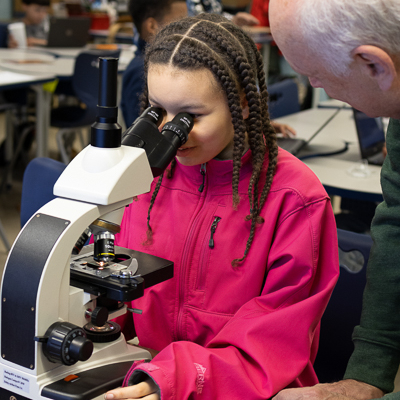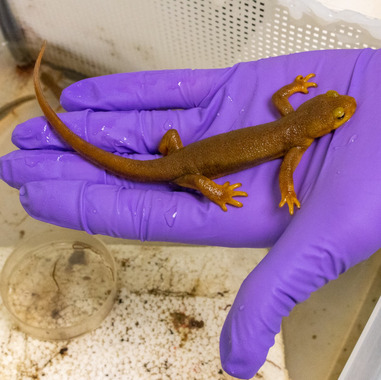Elizabeth Heath-Heckman, Ph.D., receives Early Career Investigator NIH MIRA Grant
Congratulations to Elizabeth Heath-Heckman, Ph.D., who has received a prestigious 5-year, $1,934,000 Early Career Maximizing Investigators Research Award MIRA (R35) from the National Institutes of Health (specifically the National Institute of General Medical Sciences). The grant is entitled "Elucidating Molecular Mechanisms Underlying Cooperation in Animal-Bacterial Symbioses."
Heath-Heckman is an Assistant Professor with shared appointments in the departments of Microbiology & Molecular Genetics and Integrative Biology. Her lab investigates how animals and bacteria communicate with each other.

Heath-Heckman explains that a lot of host-microbe research centers on microbial pathogens, however, “the reality is that the vast majority of interactions that we have with bacteria are either beneficial or have no discernible impact on us.”
“This grant in particular is looking at how animals can ensure that the beneficial bacteria that live in us remain cooperative.” She says that it’s usually a combination of “carrot and stick: The animals punish the bacteria if they do bad things and then reward them if they’re doing what they’re supposed to.”
Her MIRA research focuses on the association between the Hawaiian Bobtail Squid (Euprymna scolopes) and its bacterial symbiont, Vibrio fischeri, which lives in a special organ in the squid’s body. The bacteria produce light, which the squid use as biological camouflage to avoid being eaten at night. Predators looking up at them from below cannot distinguish between the squid and the surrounding light.
 Hawaiian Bobtail Squid (photo credit: Kahi Kai Images)
Hawaiian Bobtail Squid (photo credit: Kahi Kai Images)
There are several reasons why these squid are useful to study. First, they are small
and can be kept easily in a lab. Second, the squid’s organ only contains one species
of bacteria, so it’s easier to study than a vertebrate model which has thousands of
species. Finally, the squid is optically clear, which makes microscopy easier because
the organ does not require a lot of preparation to be viewed clearly through a microscope.
“Cephalopods are obviously non-humans, but bacteria have been around for the entirety
of animal evolution, and many of the ways that squid communicate with bacteria are
similar to the ways that we do,” says Heath-Heckman. The fact that she uses squid
means that she is unable to study antibodies, as antibodies only exist in vertebrates,
but, as Heath-Heckman says, “the preponderance of physiological processes are shared
between humans and squid. This is a simpler system to study these processes that are
conserved across evolution.”
“Understanding how bacterial signals are integrated into animal physiology is extremely important,“ says Heath-Heckman. By researching how conserved processes occur in the squid, we can begin to understand the effects of these processes on animal development, physiology, and immunology.



